Patreon MUSICARTA Premium
Scale Fingering Groups
~ Master Diagram ~
Understand this diagram and you'll 'get' scale fingering once and for all!
Learning the fingering of the twelve major scales is a problem for most keyboard learners. Many don't succeed, and give up. That wouldn't matter so much if it didn't mean that keys with four or five (or more!) sharps or flats remain a mystery - an embarrassment for any professional musician.
Luckily, Musicarta has good news for you.
The fingering of scales falls into five groups, which are easily grasped. This means, that instead of (re)learning the fingering for each new scale, you can start 'from the other end' and learn the rules which govern all the fingering.
The Scale Fingering Groups Master Diagram
The five scale fingering groups can be shown clearly in a single diagram.
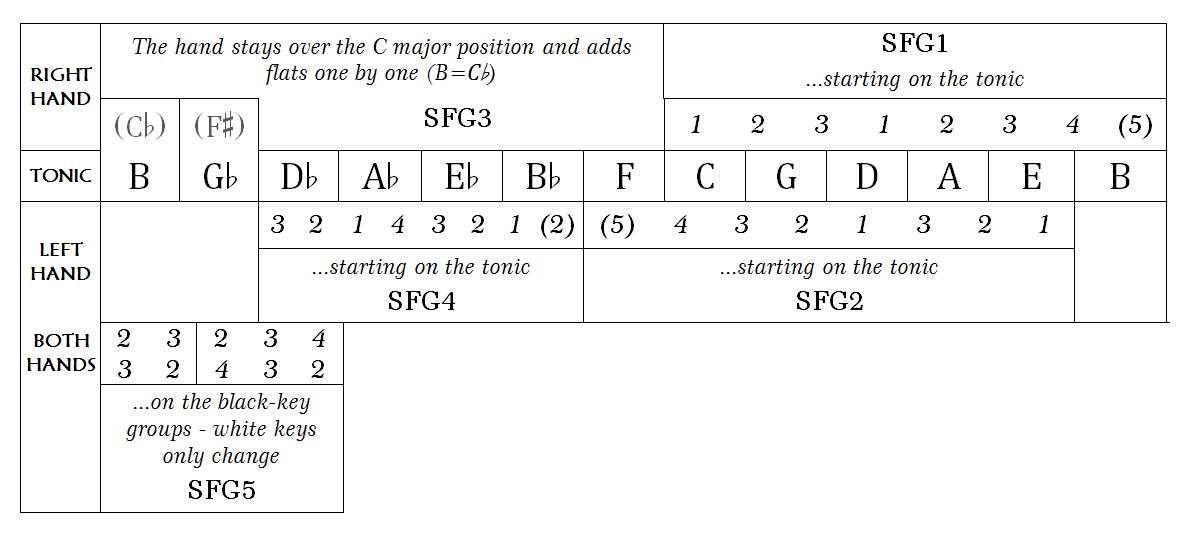
It can be seen right away that the right and left hand fingering is governed by different rules, and the hand groups never exactly coincide. Small wonder learning scale fingering one key at a time is a bewildering chore!
We'll be looking at the groups one at a time (the titles are links), but you might want to browse this page for an overview as you progress.
Scale Fingering Group 1
|
The Group 1 (right hand) scales are C major and the sharp keys G through B. That is: C, G, D, A, E and B. |
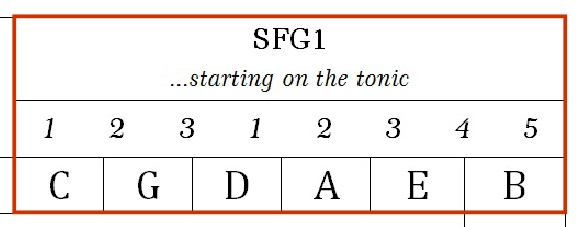 |
The fingering is the 'standard' scale fingering that most people remember.
You start with the thumb on the tonic (name-note of the scale), and play 1 - 2 - 3, then pass the thumb under on to the fourth note of the scale and play 1 - 2 - 3 - 4 - ending with 5 on the octave (also name-note).
That is
1 - 2 - 3 - 1 - 2 - 3 - 4 - 5
The thumb is always on the tonic, and you add sharps (one for G, two for D etc.) as you go through the keys.
Scale Fingering Group 2
|
The group 2 (left hand) scales are C major and the sharp keys through to E (only!). That is: C, G, D, A and E majors. |
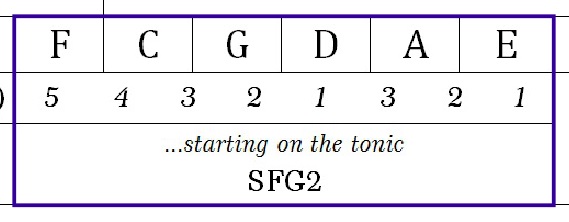 |
There's also one 'odd man out' Group 2 scale: F major, which has one flat.
The Group 2 fingering is the 'standard' left hand scale fingering that most people remember.
You start with your little finger (LH5) on the tonic/name-note and play 5 - 4 - 3 - 2 - 1, then pass finger three (LH3) over and play 3 - 2 - 1 to complete the octave.
That is:
5 - 4 - 3 - 2 - 1 - 3 - 2 - 1
- the reverse of the Group 1 right hand fingering.
Scale Fingering Group 3
|
Group 3 fingering is another right hand fingering group. |
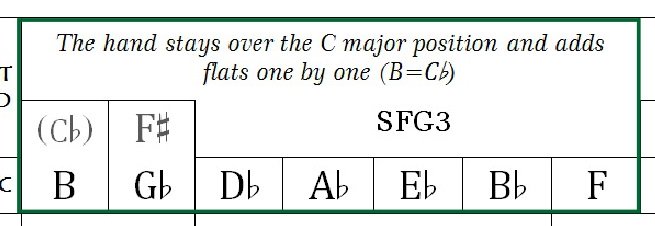 |
The Group 3 rule is that, as the flats pile up through the 'flat keys' from F through to B major (thought of as enharmonic C flat), the right hand never moves from 'C major position', covering the octave C to C.
The right hand always plays keys C and F with the thumb (RH1).
The right hand plays the keys using the Group 1 fingering while the notes beneath the fingers are flattened one at a time.
Of course, you play the scales from tonic to tonic, but the C major hand position is what dictates the fingering.
Scale Fingering Group 4
|
Group 4 is a left hand fingering group covering the flat keys from B flat through to D flat. That is, B flat, E flat, A flat and D flat. |
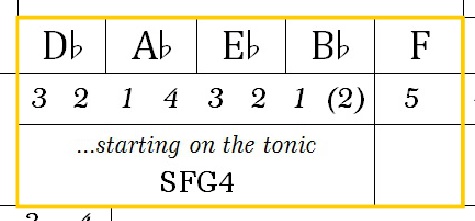 |
The fingering, starting on the tonic, is:
3 - 2 - 1 - 4 - 3 - 2 - 1 - (2)
That (2) - in brackets - indicates a 'convenience' finger: if you were going to play another octave, you would bring finger 3 over on to the tonic.
Scale Fingering Group 5
|
Group 5 is, like Group 3, another 'hand stays in the same position' group. Here, both hands plays the group of two black keys with fingers 2 and 3, and the group of three black keys with fingers 2-3-4. The only thing that changes is which of the white keys you play. Group 5 gives you the fingering for D flat, F sharp (enharmonic G flat) and B (enharmonic C flat). |
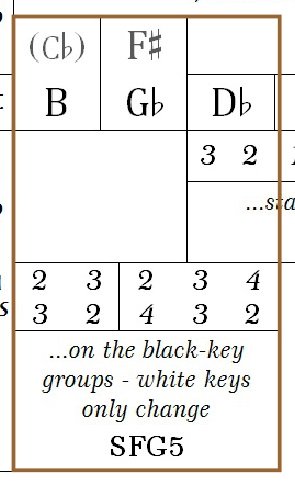 |
Working through the groups
Try to work through each Scale Fingering Groups module as a whole, so you get and retain the true, empowering 'bird's-eye view' on offer.
At a minimum, treat the individual groups as units to be worked through in one sitting.
|
Scale Fingering |
|
Musicarta Patreon
SCALES SERIES
Reference
Scale fingering
Scale Practice Patterns (SPPs)
Scale-tone practice patterns (STPPs)
Chromatic Scales
Diminished Scales
|
The MusicartaA methodical approach to keyboard syncopation for
|
PUBLICATIONS
exciting keyboard
creativity courses
CHORDS 101
WORKBOOK

~HANON~
video course

Musicarta
Patreon
PENTATONICS
WORKBOOK
video course

Creative Keyboard
video course

BEAT AND RHYTHM
WORKBOOK

- Volume 1 -

12-BAR PIANO
STYLES WORKBOOK

MUSICARTA MODES
WORKBOOK

PIANO STYLE

CANON PROJECT
video course

VARIATIONS
video course


- Piano Solo -
video course

- Piano Solo -


YouTube playlists





 THE LOGO
THE LOGO
